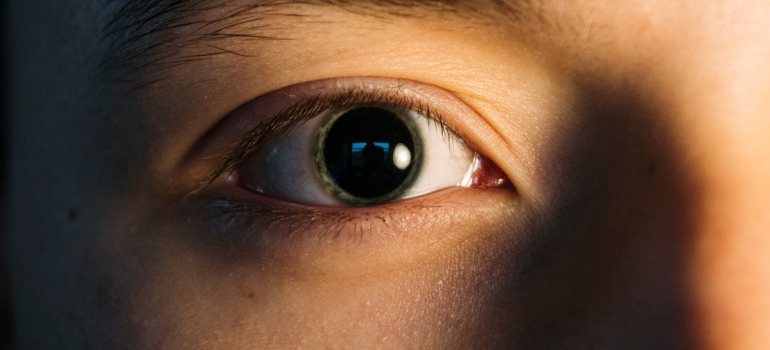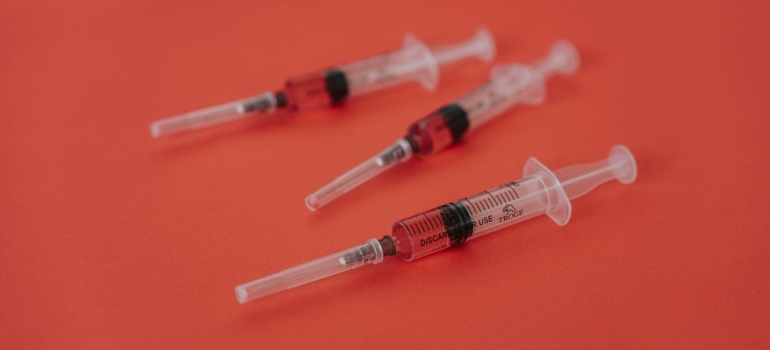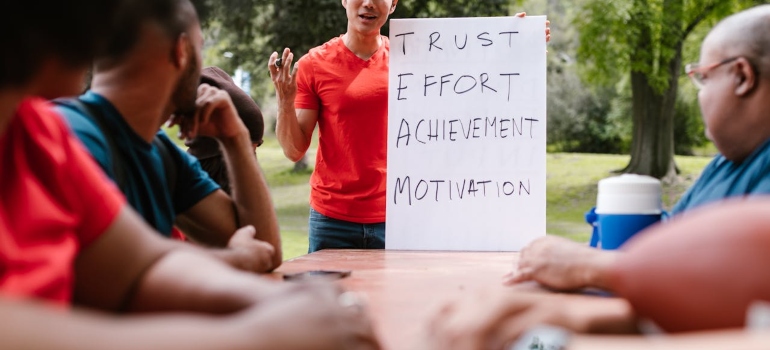Being able to recognize the warning signs of teen substance use is crucial for parents, caregivers, and educators. Understanding these signs can prevent the serious outcomes of untreated substance abuse. This means that if the addiction is not treated properly, it can range from academic decline to serious health issues and addiction. This comprehensive guide will dig into the social, physical, behavioral, and psychological signs of substance use. Hence, it will provide essential tools for prevention and support. Harmony Ridge Recovery Center also offers specialized treatment programs to help teens and their families handle the difficulties of the recovery process.
Physical Warning Signs of Teen Substance Use
Physical changes are often the most visible indicators of substance use in teens. Caregivers and educators should watch out for the following signs:
- Bloodshot eyes or dilated pupils: Changes happening often in eye appearance
- Changes in appetite or sleep patterns: Sudden weight loss or gain and significant changes in sleep habits, such as insomnia or excessive sleeping, can be red flags.
- Unexplained injuries: Frequent injuries or bruises, without a clear explanation, can indicate physical harm or accidents related to substance use.
- Poor Hygiene: Neglecting personal grooming and hygiene can also be a sign of substance misuse
While not certain proof of substance addiction, these physical signs should prompt further investigation and open dialogue with the teen. By tackling these signs early, parents and caregivers can intervene before substance use escalates. It’s important to approach the situation with care and understanding, creating a safe space for teens to discuss their challenges and seek help.

Recognizing Changes in Academic Performance as One of the Warning Signs of Teen Substance Use
Academic performance is often a clear indicator of potential substance use among teens. Sudden drops in grades or showing no more interest in school activities can signal underlying issues. Teens who previously were good at their studies may start skipping classes, missing assignments, or showing a lack of motivation. They will start avoiding classes more frequently and also visit the school nurse without apparent illness which ultimately can also be red flags. In addition, a once-engaged student might lose enthusiasm for extracurricular activities, sports, or hobbies they once enjoyed. Teachers may report changes in behavior, such as not paying attention, disruptive actions, or falling asleep during class. Parents and caregivers should take note of these changes and consider them seriously since they could be parts of warning signs. Open communication with teachers and school counselors can provide valuable insights and support.
Behavioral Changes as Warning Signs of Teen Substance Use
Changes in behavior are another important indicator of potential substance use. These changes can be subtle or dramatic but often show underlying issues. Key behavioral signs include sudden mood swings. They can manifest as extreme mood changes, potentially due to substance misuse. Teens may also withdraw from family and friends, isolating themselves, keeping secrets, and avoiding social interactions with their usual circles. Changes in academic performance are another red flag.
Moreover, a sudden drop in grades, a loss of interest in school activities, or a lack of attendance can all point toward substance use. Additionally, increased secrecy or dishonesty might appear. Also, teens lie about their whereabouts, hide activities, or become defensive when questioned. These behavioral changes might indicate that the teen might be struggling with alcohol use, for example. Recognizing these signs early can help parents and caregivers intervene accordingly.

Social Signs of Teen Substance Use
Changes in social behavior can also mean substance use in teens. One of the first signs may be spending time with new friends, whom we often characterize as a “dangerous crowd.”. Associating with peers known for drug addiction can be a strong indicator that a teen is experimenting or using substances. Also, regularly attending parties where there are drugs and alcohol can significantly increase the risk of substance use. Another critical social sign is losing interest in activities they previously enjoyed. When teens suddenly drop activities they once loved, it can show a shift towards substance use as their primary focus. Identifying these social signs early is essential for parents and caregivers. By recognizing these behaviors, they can intervene before the situation gets worse. Hence, intervention can happen by offering the necessary support and guidance to help the teen turn away from the path of drug addiction.
Psychological Symptoms
Psychological symptoms often go with substance use and can be more challenging to identify. These symptoms can manifest in different ways, usually indicating deeper issues connected with substance use. Increased irritability or moodiness can be an early sign of substance use. Teens might display sudden, unexplained mood swings that impact their interactions with family and friends. Substance use can make existing mental health issues worse or even trigger new ones. Thus leading to a vicious cycle of self-medication and worsening symptoms. More serious psychological symptoms include paranoia or episodes of confusion. These can be especially troubling as they may be a symbol of the more serious drug misuse. Teens might experience intense paranoia or cognitive disruptions that interfere with their daily functioning. Recognizing these signs is crucial for fast intervention and emphasizes the importance of comprehensive addiction therapy strategies.

Physical Health Effects of Substance Use in Teens
Substance use has multiple disastrous effects on a teen’s physical health. Therefore, this can manifest both in the short-term and long-term consequences. In the short term, teens may experience impaired coordination, memory loss, and reduced cognitive function. These immediate effects can affect their ability to perform daily activities, participate in school activities, and engage in social interactions. Over time, the long-term consequences become even more disturbing. Persistent substance use increases the risk of addiction, leading to a dependency that can be challenging to deal with. In addition, it can cause severe organ damage, affecting the heart, liver, and brain. Hence it can potentially result in chronic health conditions that could persist into adulthood. These long-term health issues highlight the critical need for early detection and intervention.
Recognizing Drug Paraphernalia
Parents and caregivers should be cautious in recognizing common drug paraphernalia. These items can serve as evidence of substance misuse. Items such as pipes and needles are often used for smoking or injecting different substances. Thus, indicating the potential use of drugs like methamphetamine or heroin. That is why, we have a heroin rehab center in WV that can help a lot with this burning issue. When we think of rolling papers, usually we think of marijuana use, and finding them can suggest that a teen is smoking marijuana. Multiple pill bottles that are often unlabeled might point to the misuse of prescription medications, which is a growing concern among teens. Also, hidden or discarded empty alcohol containers can signify underage drinking. Being able to recognize these items is crucial for early intervention. Identifying the presence of drug paraphernalia can prompt necessary conversations and actions, including seeking professional help.

Changes in Appearance
Substance use can lead to visible changes in a teen’s appearance. Thus that can serve as an important indicator of a potential problem. Sudden weight loss or gain is one of the most common signs. Also, rapid weight changes can suggest that a teen is struggling with substance use. Additionally, unexplained bruises or marks may appear, and often that comes from physical altercations, accidents, or even the direct effects of drug use. Another important warning sign is the neglect of personal grooming. Teens who are using substances might show an obvious decline in their personal hygiene and grooming habits, appearing messy or unkempt. Monitoring these changes in appearance is essential for early identification of substance use. Noticing these signs can lead to intervention at the right time. Hence, allowing parents and caregivers to address the issue before it escalates.
Communication Tips for Parents and Caregivers
Effective communication is crucial in handling teen substance use. Creating an open and non-judgmental environment is essential. It encourages teens to speak honestly about their experiences without fear of punishment. Parents and caregivers should be honest and direct, clearly and calmly expressing their worries. Active listening is also important—showing empathy and understanding can make teens feel understood and supported. It’s also useful to seek professional guidance when needed. This means that involving a counselor or therapist can provide valuable support for the family in the recovery process. By cultivating open communication, parents can build trust and create a judge-free zone for their teens to share their struggles. This approach helps in addressing substance use and it strengthens the overall relationship between parents and teens. Support for the family in the recovery process is vital, as it guarantees that everyone involved receives the necessary assistance and guidance.

Seeking Help and Support
If caregivers suspect that there is substance use happening, seeking help is crucial. Multiple resources are available to assist both teens and their families. Healthcare professionals in Harmony Ridge Recovery Center, such as doctors or addiction specialists, can provide precise diagnoses and appropriate treatment plans tailored to the individual’s needs. Therapy or counseling is another important resource, as professional counselors can address underlying issues that contribute to substance use. Local support groups offer a sense of community and belonging, providing guidance and encouragement from others who have experienced similar challenges. By seeking help early and utilizing available resources, families can navigate the challenges of substance use more efficiently. It is important to take these steps accordingly to ensure the best possible outcomes for everyone involved.
Prevention Strategies
Prevention is the best approach to combat teen substance use. Incorporating comprehensive strategies can greatly reduce the risk of substance abuse among teens. Promoting healthy coping mechanisms is essential. Also, encouraging teens to handle stress through positive activities such as sports, hobbies, and mindfulness practices can prevent them from turning to substances. Cultivating positive peer relationships is equally important. Helping teens build supportive and healthy friendships can provide a shield against peer pressure and risky behaviors. Setting clear expectations and boundaries about substance use is of extreme importance. Establishing rules and discussing the consequences of substance abuse helps teens understand how serious using drugs is. In addition, modeling responsible behavior as parents or caregivers plays an important role. Demonstrating a healthy lifestyle and responsible decision-making sets a strong example for teens to follow. By implementing these strategies into daily life, parents and caregivers can create a supportive and healthy environment.

Comprehensive Approach to Recognizing and Addressing Teen Substance Use
Understanding and recognizing the warning signs of teen substance use” is crucial for timely intervention and prevention. From physical and behavioral changes to social and psychological symptoms, being extremely observant and cautious can help parents and caregivers support their teens efficiently. Physical signs like sudden weight loss or being messy are usually the first clues. Behavioral changes such as mood swings, isolation, and academic decline are significant red flags. Social indicators, like spending time with new friends who show risky behaviors and losing interest in previously enjoyed activities, can also symbolize substance use. Providing a supportive environment where teens feel safe to discuss their issues is therefore crucial. Fostering positive peer relationships and modeling responsible behavior are important steps in guaranteeing the well-being of teens.
Reference:
https://www.gatewayfoundation.org/addiction-blog/effects-substance-abuse-appearance/#:~:text=Substance%20use%20disorders%20impact%20your,tooth%20decay%20and%20gum%20disease.



